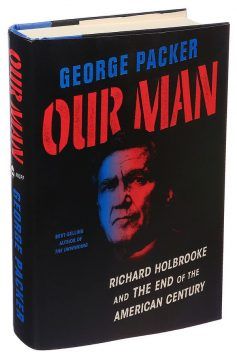 Samuel Moyn in The LRB:
Samuel Moyn in The LRB:
Like his more impressive companion and tennis partner Anthony Lake, who at least learned Vietnamese, Holbrooke struggled with what he saw there: burned monks, raided pagodas and the displacement of genuine pacification by what he came to call ‘mil-think’. Packer credits Holbrooke, with his exposure to peasant politics in the countryside, for grasping more quickly than his superiors that the American strategy was, if not a failed crusade, at any rate losing more hearts and minds than it was winning. He wrote memos about this to his superiors, but after the Tonkin Gulf incident in summer 1964, the maelstrom of American escalation made the doubts of minor men in the field irrelevant. It would take nearly nine more years of mass killing in Vietnam for the Americans in charge to recognise that the war had been a losing proposition from the start.
‘Counterinsurgency isn’t for everyone,’ Packer writes. ‘It’s a sophisticated taste.’ Holbrooke believed that the mindless application of force by the US would damage its larger goal of converting the populace. In this he followed such practitioners of the dark arts as Edward Lansdale, a former advertising man in California who urged a reorientation in strategy away from military aggression towards protecting villagers and selling the regime’s virtues. (It is an approach that has often been revived in the wars of failing great powers.) But Holbrooke’s real significance is that his doubts about American beneficence led him to recognise the limitations of using military force to pound foreign lands into submission; he knew that if American power was to justify its continuing reach, an updated idiom would be needed.
More here.
